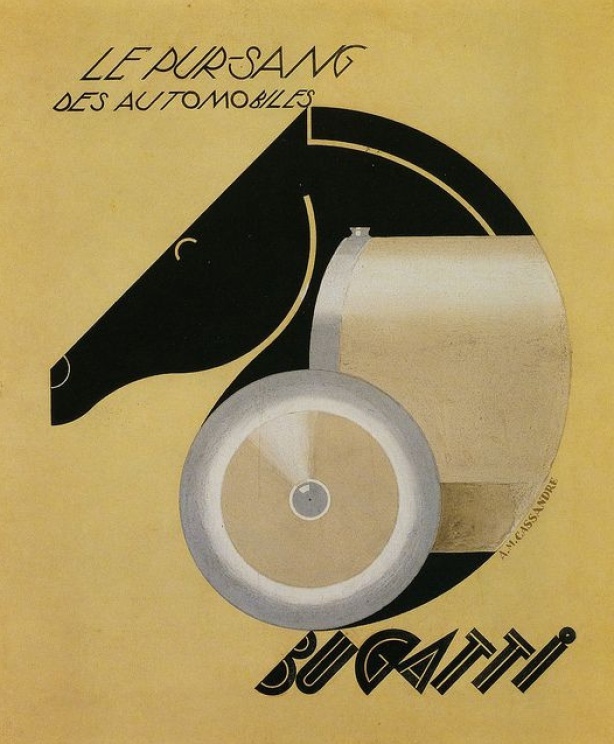Archive for June, 2014
1967 Spa 1000Km : Chaparral 2F Chev…
Posted: June 26, 2014 in Features, Icons & Iconoclasts, Sports RacersTags: 1967 World Sports Car Championship, Chaparral 2D Chev, Chaparral 2F Chev, Chaparral 2G Chev, Jim Hall, Mike Spence, Phil Hill, Spa 1000Km 1967

Fabulous shot of the Mike Spence/Phil Hill Chaparral 2F Chev at La Source hairpin, Spa-Francorchamps, May 1967.
The cars automatic gearbox failed in a race won by the Ickx/Thompson/Rees Mirage M1 Ford. 1967 was the last year of the 7-litre ‘monsters’, the CSI mandated a 5-litre limit from ’68.
Ford started the ’67 season with their new Ford GT MkIV and then left the scene having won Le Mans twice on the trot. ‘Mission accomplished’ in a sense. Ferrari won the championship from Porsche by two points in a season of grids comprising Ferrari P3/4, Porsche 910, Lola T70 , Ford GT40’s , Alfa Romeo T33 , Mirage M1 and Matra M630- truly a sportscar season to savour.

The 2F was consistently quick throughout the season but often the transmission main drive-bearing failed. Both Hill and Spence were popular Chaparral team members. Of Hill, Jim Hall said ‘Phil was a great guy with a lot of talent and really fun to work with because he understood a lot of what was going on.’
“I think he was probably as good as anybody at making the car finish. He’d put many cars together himself and knew how everything was made and how to take care of it. He was a great endurance driver for other reasons, but for that reason too. When we got near the Can-Am season in 1966 we decided we’d offer Phil a drive. He was a great guy to have on your team – he pulled for you and worked for you. And in the endurance races he was our man. I think Phil enjoyed driving for us, we just had a good relationship.”
Phil Hill never raced again after his ’67 Brands 6 Hour victory, a great way to bow out after such a career of achievement. ‘It was absolutely satisfying to win that race at Brands Hatch…in retrospect there couldn’t be a better way to finish a career could there?’ he said.
The 1967 Endurance Season is covered in full in this article on the Ferrari P4…https://primotipo.com/2015/04/02/ferrari-p4canam-350-0858/
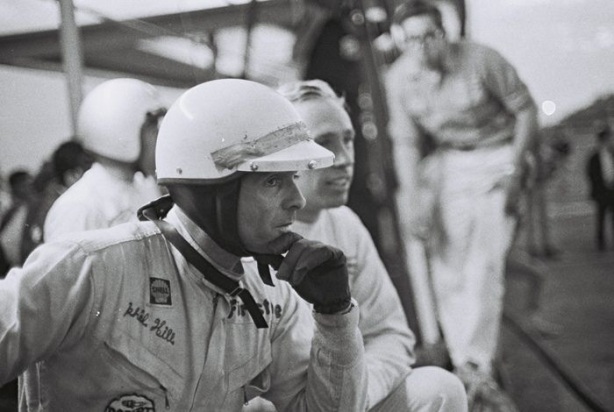
Hall also had great respect for Spence, who was killed at Indianapolis in May 1968 in a Lotus 56. “I really thought a lot of Mike. He was an awfully talented driver, very quick and a smart guy who worked hard. He was a good fit for Chaparral too. It takes the right kind of person to be on your team who fits in with your people and how they work and Mike fitted us well and was a joy to work with.”
Designer/Driver/Engineer Jim Hall’s cars bristled with innovation. The winged, 7-litre Chevrolet engined, fibreglass monocoque, auto ‘tranny Chaparrals thrilled European spectators and finally won a ’67 race, the Brands Hatch 6 Hour event in July before returning to their Midland, Texas base and the US Can-Am Championship from whence they came.

Innovative Chaparral 2F Chev…
The 2F was a massive departure from previous Chaparrals’ even by their standards.

The car featured hip mounted radiators to better position weight, this had the bi-product of keeping the cockpit cooler. The 5-year old 2A chassis had special mouldings bonded to it to create the square sided shape, the transformations were such that they were effectively new. To provide bodywork strength, sections were laid up in female moulds with 4-oz cloth and epoxy resin and ¼ in PVC foam. In areas where strength wasn’t required the fibreglass was very thin. Firestone developed wider tyres for ’67 which required wider bodywork. The actual chassis was covered by flat panels on either side, these were ‘skins’ with empty space between them and the old chassis.
Externally, only the central cab section looked the same. A new body profile was evolved in the form of a wedge to generate downforce. At the rear the body tapered away to a ‘spindle shape’ with a ‘chopped off tail’.
To balance downforce at the front a similar type of high mounted wing as was used on the ’66 2E Can-Am car was used, mounted directly to the rear uprights. The wing was connected to a foot pedal, and via hydraulics allowed the driver to have feathered ‘lo-drag’ or maximum downforce modes. Should anything go wrong with the feathering mechanism, or the driver needed his left foot for the brakes, the car went to fail safe maximum downforce, understeer mode.
The front opening contained a spring-loaded flap or duct that opened against air pressure when speeds exceeded 120mph, this helped balance aerodynamic loads front to rear.
The body floated free on its springs devoid of practically any downforce which was applied directly to the uprights by the monster rear wing. As the nose of the car pitched forward more front downforce was generated, at 150mph the nose compressed the front suspension, the trapdoor or flap opened progressively at 120-140mph at which point the car would then settle to its appropriate ride height front/rear.
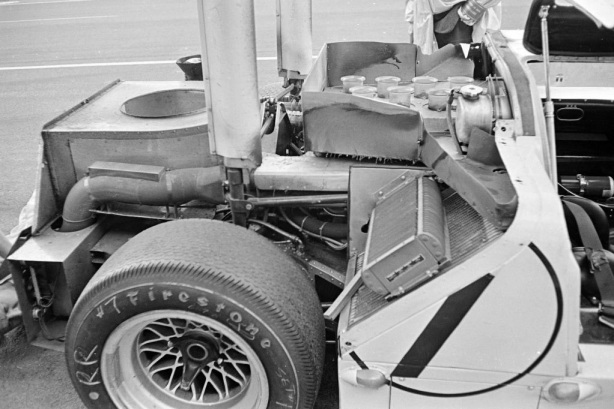
Chaparral modelled both aluminium Chev 327CID and 427CID engines- different car weight limits were applicable under the regulations. They considered the existing Can-Am aluminium chassis with 5-litre engine, and a fibreglass chassis car with the bigger 7-litre ‘lump’. The 5.4-litre engine could have been ‘de-stroked’. Simulations showed the latest staggered valve ‘porcupine’ 7-litre Chev, cast in aluminium was the faster option. It weighed 85lbs more then the ‘smallblock’ but gave around 100bhp more. The engine used Weber style 58 IDM carburetors built by Chev and gave circa 575bhp @ 7500 rpm.
The Chaparral’s GM automatic transaxle was upgraded to three speeds but the ‘box was at its limits. The increased power and torque proved the gearbox was the packages weak link- this was feared by Chaparral from the start of the 2F program. GM simply did not want to build a new transmission and hoped internal changes could cope with the 7- litres greater torque, but this was not the case.
There is a lot of mystique about the transmission. Pete Lyons, in his ‘Profile Publications’ article on the Chaparral ‘Glassfibre Cars’ described it as follows, “It was laid out much like a Hewland with 2 speeds and later 3 and an hydraulic coupling, a torque convertor instead of a clutch.”
“The gears were simple straight-cut spurs engaged by sliding dog clutches; every second dog was cut back a little to assist the clutchless changes. The changes were all done manually, the driver easing his throttle foot to unload the dogs and snatching the gear as quickly as he could. It therefore wasn’t really an automatic transmission, it was a fluid clutch transmission. The engine was always started with a gear engaged, the driver preventing a lunge forward by firm pressure with his left foot. At…5000rpm the coupling was designed to lock up rigidly to prevent further slip and power loss. Sensitive drivers could feel this happening.”
The advantages of the ‘box were better modulation of braking, on down changes the fluid coupling lessened any tendency of the rear wheels to lock, finally the fluid coupling absorbed many shock loads such as a ‘yump’ landing, common at the time.

Jim Hall’s attention to weight saving was fanatical, the car weighed 1750lbs wet, 600lbs less! than the Ford MkIV. This was due to the fibreglass chassis, aluminium rather than (Ford) iron block engine. The batteries were of very expensive cadmium from the aerospace industry.
The body was made of a sandwich of 1/4 inch thick PVC foam between thin skins of ‘4oz cloth’ impregnated with Shell epoxy resin which was formed to shape in a vacuum bag apparatus and then cured at room temperature. Sylvania made new quartz iodide lights using hand made bulbs in Marchal reflectors.
The whole car was built to exceptionally high aerospace standards of quality and finish.

Jim Hall and Aerodynamics…
Gordon Kirby interviewed Jim Hall in 2008, he published these comments by Hall about his seminal aerodynamic work in the mid-sixties.
“We calibrated the suspension by just rolling the car out and putting weights on it so we knew what load it took to move the car up and down. We had a cable drive that drove a pencil and a roll of paper that was run by a little motor so you could set your zero point. You would go out and make a run and push a button and make a mark across the paper so we knew what the front and rear downforce was. You could run a couple of different speeds and then you could put it on a graph. You knew that it was increasing as the square of the speed so you knew what the curve looked like and you pretty much had the downforce over a speed range. That was pretty simple to do.”
Hall’s method of measuring the air pressure or downforce on the surface of his car’s wings or bodywork was equally simple in concept. “The other thing we did was when we needed to change the surface we had a manometer that was just a bunch of u-tubes made out of tigon tubing and full of coloured water,” Hall related. “If you were in a sportscar you put it in the seat beside you and then went out and tapped a bunch of holes in the paper. You ran these to one side of the tubes and ran the other one to a pitot tube so you could get the dynamic air pressure on the surface.”
“I originally did it with a Polaroid camera. I had a Polaroid camera mounted on the dash and the manometer mounted on the seat back beside me. I didn’t even have a pitot tube for a static pressure source. I read in a book somewhere that a guy in WWI thought about doing this. The way he thought about doing it was you took a thermos bottle and put a piece of tubing in it and right before you made the test you opened it up then closed it so you had static air pressure in it. Then you went out to make your run and compared it to the pressures you got, then opened it and made sure it didn’t change. In a matter of about twenty minutes that thermos bottle would maintain an even enough temperature that the pressure wouldn’t change much. So you had some static pressure while you were sitting in the pit and you also had static pressure when you were going down the straightaway. It’s simple-minded, but pretty tricky! And that’s the way we started.”
“Then we bought a light airplane pitot tube and mounted it out front of the car. We found a static pressure place where we could run that pitot tube that matched the thermos. Then we had a static pressure source all the time.’
Thus began the serious science of racing car aerodynamics. Of course, Hall had no idea about the depth of the pandora’s box he was opening but he is without doubt the father of the modern aerodynamically-driven racing car.



Chaparral 2F: Eight race history…
One of the things which strikes you about this big car when you look at its speed during 1967 is its pace on all types of circuits. It was on pole at Monza, Spa, and the Nurburgring, started from grid position two at Sebring and Le Mans, and grid three at Brands.
The challenges of the Daytona bowl are vastly different to the swoops and curves of Targa or the ‘Ring let alone the high speed challenge of Le Mans. It was clearly a complete-car, an excellent all around package- the best car, Phil Hill was quoted as saying, that he ever drove.
At Daytona 2F ran with its wing fixed in position, but still only just missed pole. Hill lead, took the fastest race lap and was pulling away from the Ferrari P4s until the fourth hour, falling off on marbles after a pitstop and hitting a wall. Hill was a little miffed that teammate Mike Spence, with whom he had a great working relationship, had not warned him about the hazard, their race ended on lap 93, Bandini and Amon took a Ferrari P4 win.

At Sebring Hill was forced to retire from the meeting having acute appendicitis, so Jim Hall stepped into the car with Spence, he was second on the grid but had trouble starting. The car retired on lap 145 with differential failure, the car car trailed smoke for several laps in advance of retirement, victory went to the McLaren/Andretti Ford MkIV.
In Europe the cars were based in Frankfurt, the Monza event was the first on the continent. Spence put the car on pole, using the second 2D chassis converted to 2F spec, and from the flag diced with the P4s but a universal joint failure eliminated the car before the end of the first hour. Bandini/Amon won in a P4.
At Spa a week later, the car had a small trim tab added at the wings trailing edge, the tab made it easier to adjust the wings settings at high speed. Hill put the car on pole by 3.5 seconds but rain fell on Sunday. ‘Rainmaster’ and local boy Jacky Ickx “ate us alive” Hill said. Spence ran in fifth until a fuel stop after which the car refused to start. At half distance it was eighth but another blown transmission seal caused its retirement. Ickx and Thomson won in a Mirage M1.

Mike Spence had other commitments so Hap Sharp stepped in with Phil Hill at the Little Madonie. The 575 bhp ‘roller skate’ was a challenge around the mountainside of the famous Targa course.
Local boy, Nino Vaccarella was faster in practice than the 2F by 1.5 minutes, the car not entirely happy over the bumps but was still up to fourth, 9.5 minutes behind the leading Porsche when a tyre went flat at Collesano. Paul Hawkins and Rolf Stommelen took the win in a factory Porsche 910.

At the ‘Ring Spence took five seconds from the old sportscar lap record and set the first over 100mph lap by a sporty. John Surtees was seven seconds adrift in his Lola T70. Hill put on his harness after the Le Mans start so came around in sixth, by lap eight he moved into the lead, but at about the 1.5 hour mark, on lap 10, the cars transmission again failed. Schutz/Buzzeta won in a Porsche 910.

Le Mans was and still is all important, two Chaparrals ran. Hill/Spence missed pole by only 0.3 of a second from a Ford MkIV. Johnson/Jennings in the other 2F were 24th. Both 2F’s got away well, by the end of the first hour Spence was fourth and by the second he was 2nd, then the wing actuation mechanism broke, the car went into high downforce, safe mode, knocking around 40 mph off the top speed.
Inevitably the transmsision gave trouble but the car was still in third when an heroic three hour rebuild of the transmission was commenced by the crew, all to no avail as the car was withdrawn. The other 2F retired earlier with electrical failure. The race was famously won by the All American Boys, AJ Foyt and Dan Gurney in a Ford MkIV.
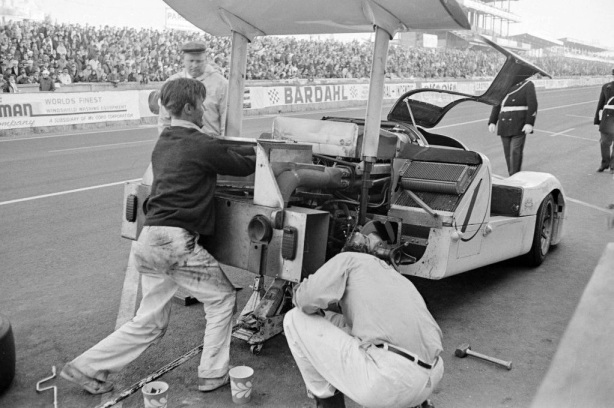
The inaugural Brands Hatch 500 Miles was the last championship race of the season. The Brabham/Hulme LolaT70 was on pole, Spence/Hill were 0.8 second adrift in third. Hulme took the lead but retired with rocker failure, letting the 2F into the lead. A long mid-race pitstop dropped them back to third but consistent laps taking two seconds per lap from the Ferrari in front saw the wonderful car displace the Stewart/Amon Ferrari P4. A winner, finally!
Motor racing is full of ‘ifs, buts and maybes’.
As the great, late and laconic Frank Gardner said ‘If Yer Aunty had Balls She’d be Yer Uncle’.
One wonders what this seminal, defining, brilliant car would have achieved had the ‘oh-so-clever’ ‘automatic gearbox’ which was such a big part of most of the Chaparral 2 program, had the re-engineered gearbox it so badly needed and deserved.
In a sad sequel, Jim Hall was preparing for another season with a 7-litre car for 1968 when the FIA announced a 3- litre limit for prototypes from 1968 and limited sportscars to 5-litres in capacity- 25 examples of which had to be built for homologation. The big Fords and Chaparrals were out, racing was the poorer for it.
It was not over for Chaparral of course, but after 1967 they focused on their domestic Can-Am Championship with equally radical cars, and many years later a victorious assault on the Indy 500, both stories for another time.

Tailpiece…

Etcetera…
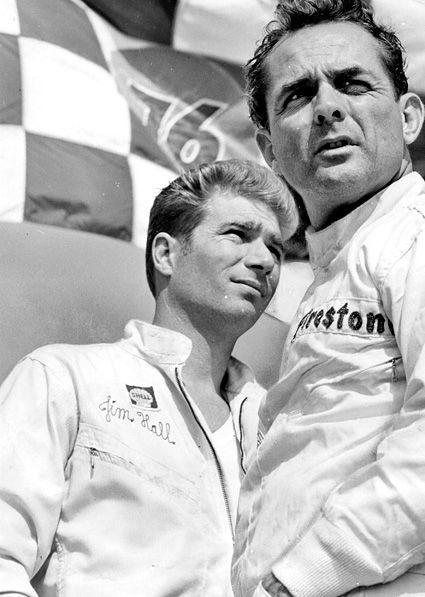


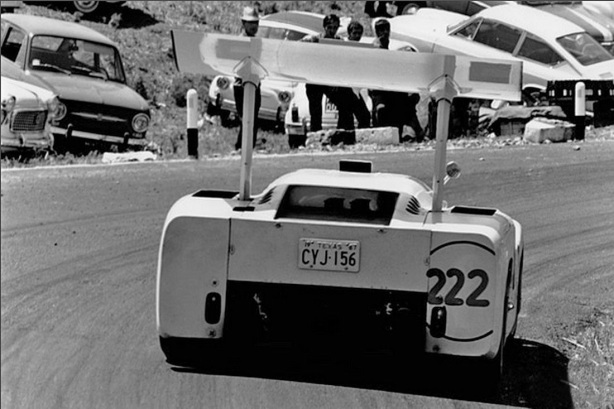


Credits…
Pete Lyons ‘The Chaparral 2,2D,2F The Glassfibre Series’ Profile Publications, Cutaway drawing- James Allington, Jim Hall quotes from a Gordon Kirby ‘MotorSport’ articles in November 2008 and January 2011, Dave Friedman, Bill Wagenblatt ‘Track Thoughts’, Albert Bochroch, Nigel Smuckatelli, Karl Ludvigsen, Bernard Cahier, Louis Klemantaski, Brian Hatton
See this link for some great information on Jim Halls fabulous cars…
http://www.thechaparralfiles.com/
Finito…
‘Not Me Driving The Hire Car This Morning Matey…’Jack Brabham Monza mid ’60’s
Posted: June 25, 2014 in F1, FotosTags: Italian Grand Prix 1965, Jack Brabham, Monza
Lella’s Lola…Peter Brennan’s Restoration of the Ex-Lella Lombardi Lola T330 Chev ‘HU18’…Episode # 1
Posted: June 24, 2014 in Features, RestorationTags: European F5000 Championship, Formula 5000, Gijs Van Lennep, Jackie Epstein, John Turner, Keith Holland, Lella Lombardi, Lola T330 HU18, Peter Brennan
Lola’s T330…
Lola’s F5000 domination started with the ’72 model T300, the process completed by the ’73 T330, and 332, 332C, single seat Can Am T333 variants of the car built over a decade.It is one of the most successful competition cars ever in terms of race wins and longevity, if not THE most successful.
Eric Broadley’s evolution of the T300 produced an extremely competitive car for one of F5000′ s most competitive seasons, the cars aluminium monocoque ‘dressed’ in curvaceous bodywork executed by Specialised Mouldings. If ever an F5000 looked right this was it.
The 1973 season and those which followed proved that beauty was far from skin deep.
T330 ‘HU18’…
T330 ‘HU18’ was sold in March to Jackie Epstein Racing for the ’73 European F5000 championship. Epstein was a long time race entrant of sports cars before changing to F5000 after the death of his business partner, racer Paul Hawkins.
The Radio Luxembourg # 208 sponsorship was iconic at a time when the BBC had a monopoly on the radio airwaves in the UK. Radio Luxembourg, on frequency 208 medium wave were an offshore broadcaster of popular shows into the UK.
The car’s driver for 1973 was ’71 Le Mans and ’72 British F5000 Champion Gijs Van Lennep. His best results a 2nd at Snetterton and 3rds at Mondello Park and Jyllands-Ringen. Whilst Gijs was away on sports car duties Tony Trimmer, Clive Santo and Ray Allen also raced the car, albeit without success.
Teddy Pilette won the 1973 title with a demonstration of consistent speed in his Chevron B24.
Into 1974 Epstein signed Lella Lombardi, she had come through Italian racing and European F3 and immediately impressed with her handling of HU18. Her best results 4ths at Brands, Monza, Oulton Park and Mallory Park. In ’74 the title was won by Bob Evans in a T332.
Lombardi raced in F1 for March in ’76, HU18 was sold by Epstein to John Turner, the car also driven by Keith Holland and Richard Scott that year. Hollands 4th at Brands was the best result.
From Europe to Obscurity in the US for 34 Years and into Peter Brennan’s TLC…
Peter Brennan picks up the story, ‘Allen Karlberg was an American working in the UK at the time and was commissioned by countryman Jim Burnett to acquire a car for conversion to a central seat Can Am spec, F5000 having morphed into Can Am in an attempt to improve crowd numbers. The car was shipped to Portland, Oregon in 1977 where it remained for 36 years’
‘It was disassembled and some work done, for example the DG300 had a new crown wheel and pinion but essentially it was untouched, the only thing preventing considerable damage to the car was the fact it was in parts and the bits and pieces far enough away from a workshop fire which melted the right-front corner of the tub some time in the ’90’s.’
‘Burnett died several years ago and his Executors approached Karlberg to sell the car, I was cruisin’ the internet as I do. I was looking for another F5000 to restore and spotted a small ad in a club magazine which said something like ‘fire damaged F5000 for sale, major project’.
‘Whilst their was a lot of junk in the workshop around the bones of the car I could make out what it was and also see that the factory chassis plate was on it. I agreed to buy it and with a little research from the pictures he sent me, the front brake ducts and oil tank, for example, I was confident it was HU18 even before he called me to advise the plates details !’
‘Even though the car had been in bits forever it had remained in the same place so the tub, ‘box, 4 complete corners, wheels and spares, exhaust, radiators, fuel cells, swirl pots etc, etc were all there. Shipping it out of Portland was a pain in the arse but Kevin Bailey’s ‘Cheetah Imports’ always helps me and it finally arrived, then the real work began’.
Our intrepid racer has owned and restored Elfins, Matich and Lola F5000’s, everything but a Chevron. HU18, as the most lightly raced of the surviving T330’s, most of which were converted to T332 spec, is something special.
Peter is the ‘real deal’ as a racer enthusiast ‘…the main reason I do this is that I love the challenge, meeting and making new friends, it’s not all about the racing. It’s a real journey, going to all parts of the world in pursuit of parts and information’.
We look forward to sharing the journey with you PB.
Next month, the mammoth task of resurrection begins.

First photo of the tub allowed Brennan to identify it as probable T330, RHF tub melted away readily visible.

‘HU18’ as it arrived out of the container in Port Melbourne, despite 34 years of neglect, and the fire, most of the critical parts had remained in the workshop in Portland close to the car

Original Lola wheels, calipers and rear uprights, nose-cone support, suspension componentry, second hand Mota-lita steering wheel,and much-much more

‘Racers Retreat’ just arrived’, Peter Brennans workshop in suburban Melbourne…’HU18′ tub, Arrows A1, a Ralt RT4 or 2, Cosworth BDD head and sundry other bits of interest..always an intriguing place to have a beer
Photo Credits…
Richard Bunyan, Peter Brennan
